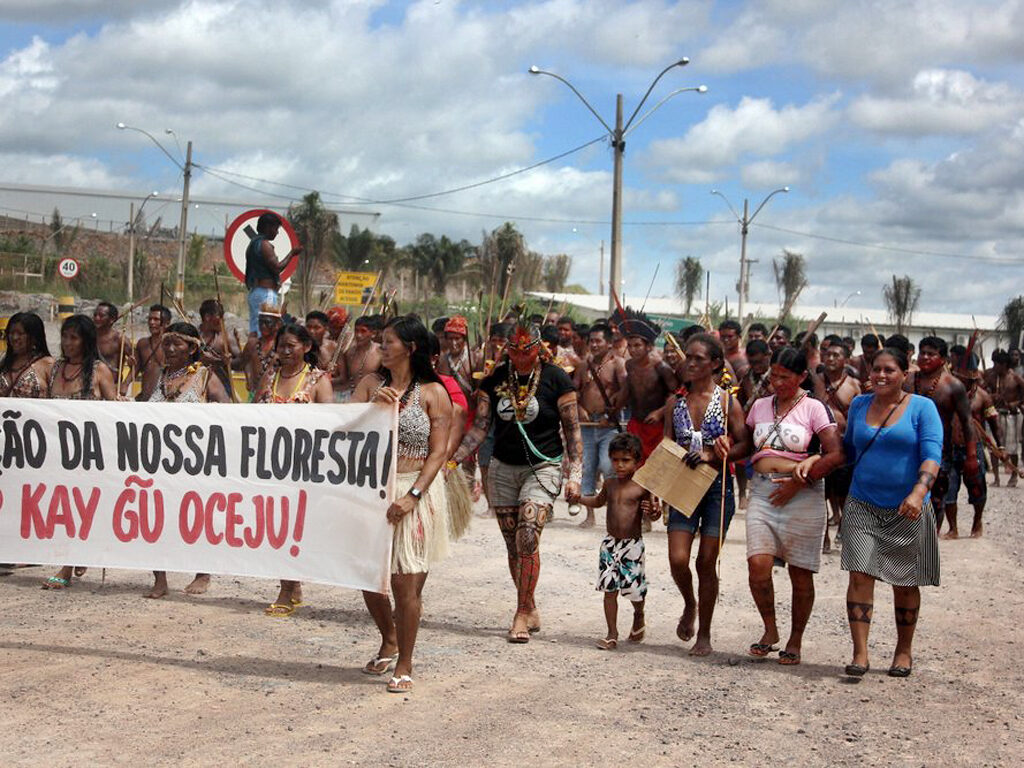The world’s largest rainforest
The Amazon rainforest is the world’s largest continuous rainforest. The people who live there have an amazing resource of food, medicine, firewood and fresh water. There are about 30 million people living in the region, which spans the countries of Brazil, Colombia, Bolivia, Peru, Ecuador, Venezuela, Guyana, French Guiana and Suriname.
The Amazon rainforest affects the entire Earth’s climate. It contributes effectively to the cooling of the planet. Trees absorb carbon dioxide, produce oxygen and clean the air.
The Amazon River flows through the world's largest rainforest, the Amazon rainforest. The river is over 7000 kilometers long.
Large tropical rainforests, such as the Amazon, can create their own weather. When a lot of water evaporates in the mornings, clouds form over the forest in the afternoons, which then rain back down on the forest.
The tapir is the largest land-living mammal in the Amazon.
Photo: Wolves201-CC-BY-SA
The capybara is the world's largest rodent. It looks like a guinea pig, but lives much like a hippopotamus.
Photo: Bernard-DUPONT-CC-BY-SA
The jaguar is the largest feline in the Amazon rainforest.
Photo: Leonardo-Ramos-CC-BY-SA
Howler-monkeys are known for the males' loud howls, that can be heard over several kilometers. In early mornings they can be heard in the Amazon.
Photo: Renato-Augusto-Martins-CC-BY-SA
Toucans are related to woodpeckers, and live in the Amazon rainforest. The large beak is, among other things, used to regulate the bird's body temperature.
Photo: Ingrid-Torres-de-Macedo-CC-BY-SA
Leafcutter ants are little farmers! They collect plant material which they feed to a fungus. The fungus then gets eaten by the ants. There are several species of leafcutter ants in the Amazon.
Photo: Geoff-Gallice-from-Gainesville-CC-BY
20,000 different species of trees and 10% of all animals
The Amazon rainforest is home to around 20,000 different species of trees – by comparison, Sweden has almost 30 different species. Around 10% of the world’s animal species are also found in the Amazon. Of the 500 species of mammals found there, the tapir is the largest land dweller. Other large mammals include capybaras, sloths and anteaters. The largest cats are the jaguar and the ocelot, and there are many species of monkeys, such as howler monkeys, spider monkeys and squirrel monkeys. Around 1,300 species of birds, such as the toucan and various parrots, live in the Amazon. Among this fantastic mass of life, there is also a very large number of amphibians, freshwater fish and insects. But wild vertebrates in the Amazon rainforest declined by 68% from 1970 to 2020.
The Brazilian city of Manaus has millions of residents, and is located in the middle of the Amazon rainforest. In total, about 30 millions of people lives in, or very close to, the rainforest.
Photo: Portal-da-Copa-CC-BY
Deforestation is a huge threat to the Amazon rainforest, and all its wildlife. Here, deforested land is shown on a satellite image.
Photo: Astro_Alex-CC-BY
The Amazon rainforest is deforested to grow soy, coffee, corn and cotton, among other things.
Photo: European-Space-Agency-CC-BY-SA
Illegal deforestation is a threat to the rainforest. The image shows an illegal deforestation discovered by the police, in the Amazon 2016.
Photo: Ibama-CC-BY
Here is a Brazilian police operation against illegal mining in the rainforest. The mining is environmentally hazardous, and releases toxins that affect many people and wildlife in the Amazon.
Photo: Ibama-CC-BY-SA
During the years of 2019 and 2020, huge parts of the Amazon rainforest caught fire. The fires were started on purpose, to make space for growing soy to feed cattle in meat production. But the fires spread uncontrollably.
Photo: Amazonia-Real-CC-BY
Deforestation to make space for growing rubber is also common in the rainforest.
Photo: Colourbox
The cacao fruit, which contains the seeds to produce chocolate, comes from the Amazon rainforest.
Photo: AlejandroLinaresGarcia-CC-BY-SA
Many popular house plants, like the Swiss cheese plant, originate from the Amazon rainforest.
Photo: Colourbox
Meat production and farming the biggest threats
The main threats to the Amazon are deforestation and fires to create grazing land for beef production and space for crops. Soybeans is the biggest problem, used as animal feed. Forests are also cleared to grow coffee, cocoa, tobacco, bananas, palm oil and many other products we buy every day. Deforestation takes place legally and in trade agreements with EU countries, but also illegally. Mining and poaching are also major threats to the Amazon and its diversity.

Photo: Ocupacao-Munduruku-CC-BY-SA.
Protect the Amazon rainforest
Indigenous people in the Amazon have long used the rainforest in a small-scale and more sustainable way. Many of these groups regularly protest against deforestation and environmental destruction. Several international organisations, led by the World Wide Fund for Nature (WWF), are working on projects to protect forests through national parks, in direct cooperation with local people. The WWF and others are also promoting a switch to logging and small-scale farming.

Photo: James-Martins-CC-BY
What can I do?
Don’t buy beef and soya labelled as coming from countries in the region, buy organic and fair trade.
Join the WWF and other organisations campaigning in the Amazon, or get involved politically on environmental issues.
Write to the head offices of businesses trading in Amazonian products and to EU politicians working on environmental issues and trade, from all the EU countries.